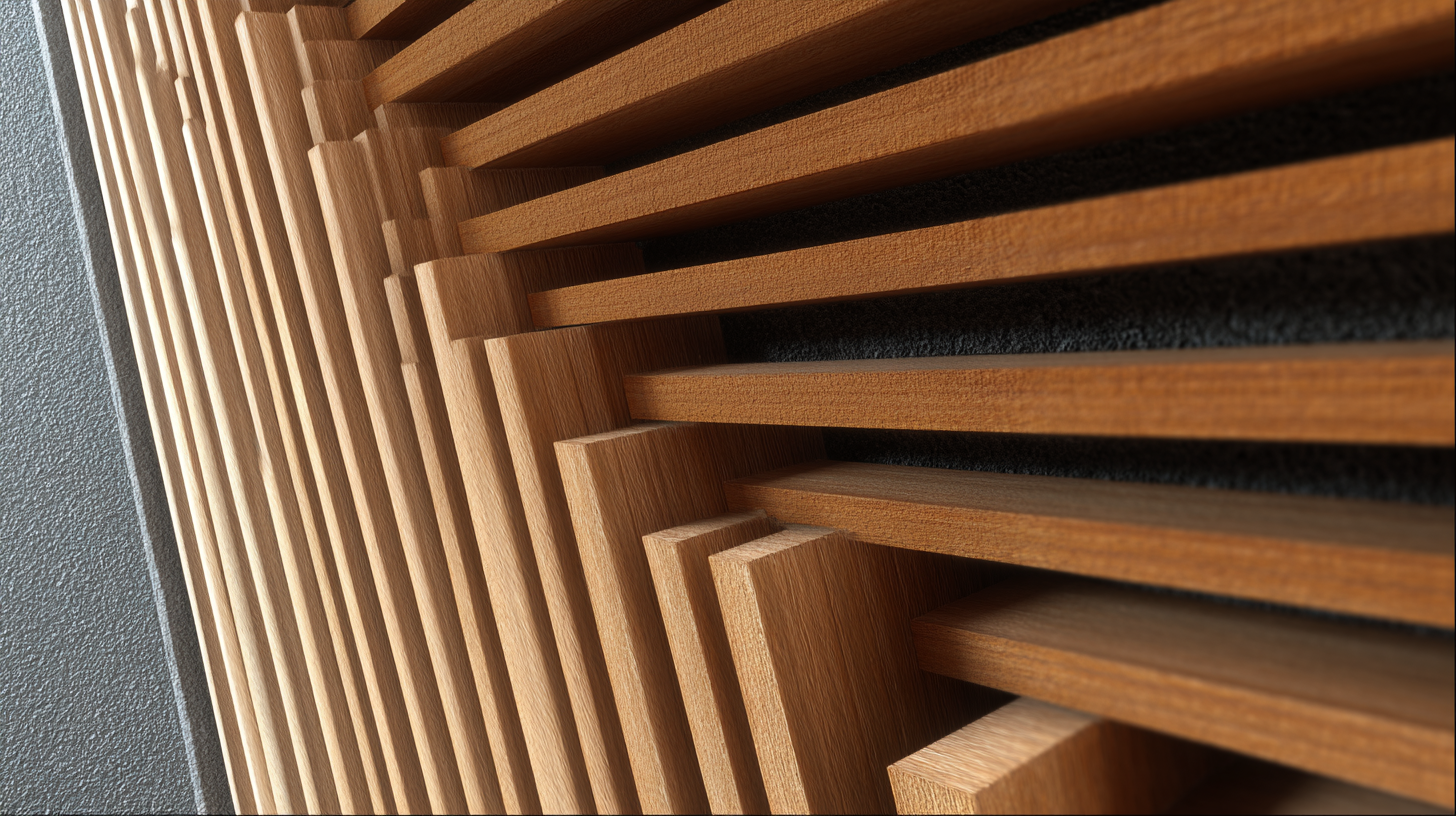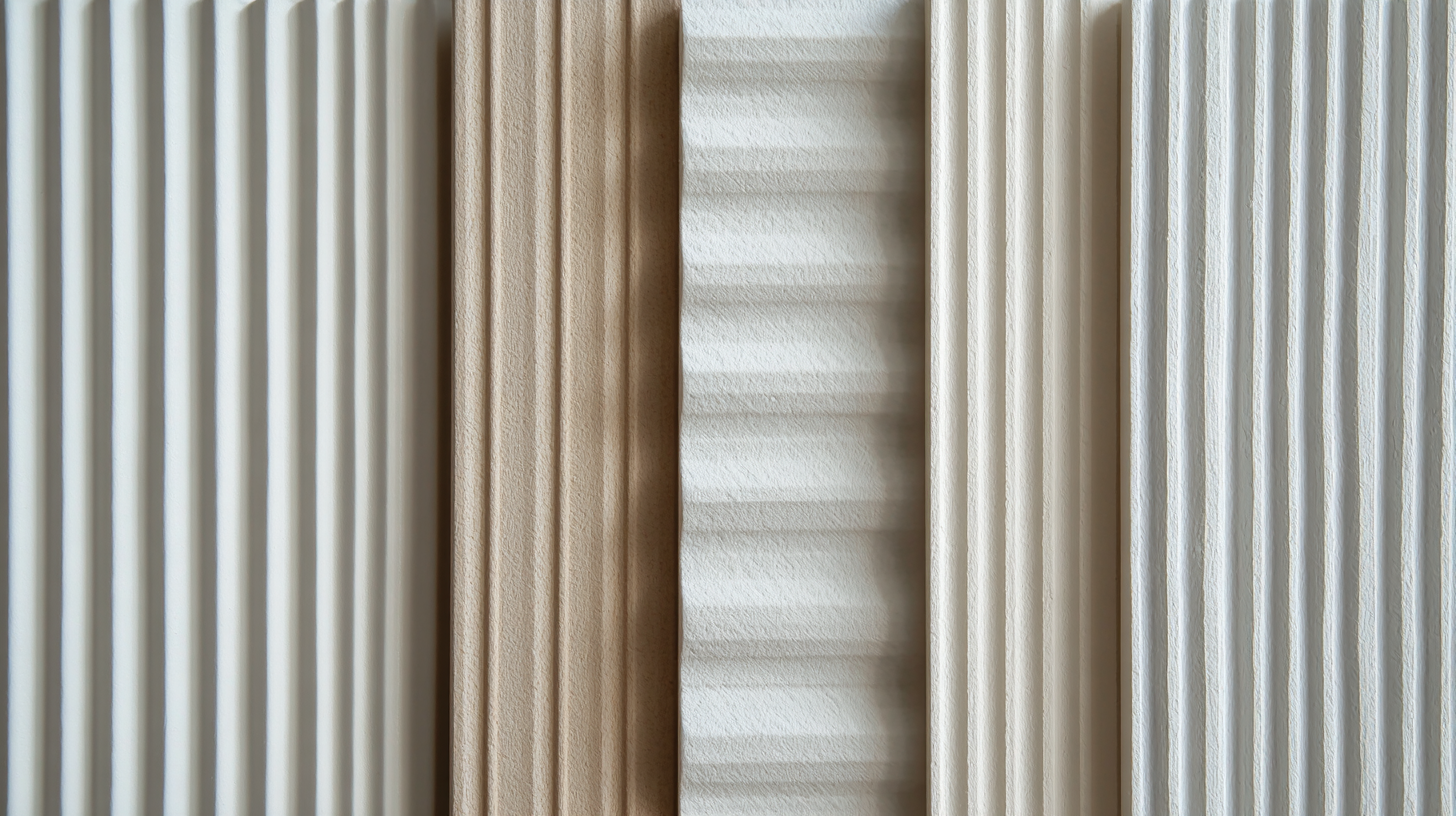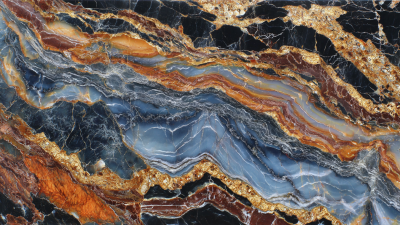
- Ginazhao@wanglumaterial.com
- Mon - Sat at 7:00AM to 9:00PM



In contemporary interior design, fluted panels have emerged as a quintessential element that not only enhances aesthetic appeal but also offers functional benefits. A recent industry report by the American Institute of Architects highlights that over 30% of new residential designs incorporate textured materials, with fluted panels among the most sought-after features due to their ability to add depth and character to spaces. These panels, characterized by their ridged surfaces, provide a unique visual and tactile experience, making them ideal for a variety of applications—from accent walls and cabinetry to room dividers. Moreover, according to a survey by Design Milk, over 70% of interior designers believe that incorporating fluted panels positively influences the overall ambiance of a room, showcasing their versatility in modern design. As homeowners increasingly seek personalized and distinctive interiors, the relevance of fluted panels continues to rise, making them a focal point for both aesthetic innovation and practical functionality in design practices today.

Fluted panels are making a significant impact in contemporary interior design, celebrated for their unique aesthetic appeal. These vertically grooved features add depth and texture to a variety of spaces, from kitchen cabinets to full wall installations. In 2025, fluted panels are not just a trend but a versatile design choice that brings a sense of sophistication to modern homes. Their play with light and shadow creates a lively atmosphere, making interiors feel dynamic and inviting.
**Tip:** For a cohesive design, consider pairing fluted panels with neutral color palettes or rich earthy tones to enhance their visual allure. A fluted kitchen cabinet, for instance, can become a statement piece when combined with understated hardware and simple, clean lines.
Integrating fluted elements in your decor can also be as simple as using fluted furniture or accents. These details break the monotony of flat surfaces while maintaining a sleek, modern look. Whether you choose to emphasize them through bold accent colors or keep them subtle, fluted panels are an excellent way to embrace texture and elevate your space.
**Tip:** Experiment with different finishes, such as matte or glossy, to personalize the look of your fluted installations and create a striking focal point that resonates with your overall design theme.
 Fluted panels are making a striking comeback in modern interior design, showcasing their versatility across various room styles. One compelling example is the use of fluted terra-cotta panels in recent architectural projects such as The Treadwell, which draws inspiration from art deco aesthetics. This innovative approach not only adds a unique texture and visual interest but also aligns with the growing trend towards incorporating natural materials in interior spaces. According to industry reports, fluted designs are particularly popular because they can enhance both the modernity and elegance of a room while providing a tactile experience that engages the senses.
Fluted panels are making a striking comeback in modern interior design, showcasing their versatility across various room styles. One compelling example is the use of fluted terra-cotta panels in recent architectural projects such as The Treadwell, which draws inspiration from art deco aesthetics. This innovative approach not only adds a unique texture and visual interest but also aligns with the growing trend towards incorporating natural materials in interior spaces. According to industry reports, fluted designs are particularly popular because they can enhance both the modernity and elegance of a room while providing a tactile experience that engages the senses.
Additionally, the integration of fluted details has been embraced in various settings, from residential spaces to commercial environments. Designers are utilizing these elements to create cohesive and immersive atmospheres, with predictions suggesting that fluted features will dominate kitchen and living room designs in the near future. This trend is not only aesthetically pleasing but also serves practical purposes, such as streamlining cabinetry or providing subtle separation in open-plan layouts. As homeowners continue to seek personalized and distinctive looks, fluted panels stand out as a trend that meets the demands for functionality and style in contemporary decor.
When selecting materials and finishes for fluted panels in modern interior design, it is essential to consider both aesthetics and functionality. Wood remains a popular choice for its warm, classic feel, while also offering durability. Opt for high-quality hardwoods like oak or walnut for a sophisticated look, or explore engineered wood for a more budget-friendly alternative that still provides excellent versatility. The finish of the panels plays a crucial role; matte finishes lend an understated elegance, while glossy finishes can reflect light and add a modern touch.
Furthermore, color selection can dramatically influence the overall ambiance of a space. Neutral tones such as whites and beiges create a serene backdrop, allowing for flexibility in decorating. In contrast, bold colors like deep greens or navy can serve as stunning focal points. When combining fluted panels with other materials, such as metals or textiles, consider balance and harmony. Textured finishes can complement the linear patterns of the panels, enhancing the visual interest in the space. By carefully choosing the right materials and finishes, fluted panels can seamlessly integrate into various design styles, from contemporary to more traditional homes.

Fluted panels have emerged as a popular choice in modern interior design, thanks to their ability to add texture and depth to spaces. When combined with other design elements, fluted panels can elevate a room's aesthetic and create a harmonious balance between form and function. For instance, pairing fluted panels with sleek metal accents can create a striking contrast, enhancing the contemporary feel of the space. The combination of soft, curved lines of fluted surfaces with the sharpness of metal fixtures enriches the visual experience, making interiors feel more dynamic.
Moreover, integrating fluted panels with natural materials like wood or stone introduces an organic quality that resonates with biophilic design principles. Using wooden fluted panels, for instance, can warm up a modern space while also fostering a connection to nature. When placed alongside large windows or greenery, these materials work together to create a tranquil environment. Lighting also plays a crucial role in this combination; strategically placed fixtures can highlight the ridges of fluted panels, casting intriguing shadows and accents that further enhance the overall ambiance. In this way, the versatility of fluted panels is fully realized, making them a compelling choice for those looking to innovate their interiors.
Fluted panels have emerged as a trendy design element in modern interior decor, offering both aesthetic charm and functional versatility. To incorporate these chic features into your home, consider starting with your walls. Adding fluted panels to a feature wall can create depth and texture, instantly transforming an ordinary room into a stylish space. Paint them in a bold color for a statement look or opt for softer hues for a more subtle, elegant feel.
Another DIY idea is to utilize fluted panels for cabinetry and furniture accents. By applying these panels on the fronts of cabinets or as decorative details on furniture, you can elevate the overall design, giving pieces a contemporary edge. This approach works particularly well in kitchens and living rooms, where a touch of vertical line can enhance sophistication. To complete the integration, pair the fluted surfaces with minimalist hardware for a seamless, modern appearance, allowing the beauty of the panels to take center stage.
| Dimension | Application | Material | Color Options | Maintenance |
|---|---|---|---|---|
| 3 ft x 8 ft | Feature Walls | MDF | White, Oak, Walnut | Wipe Clean |
| 4 ft x 10 ft | Room Dividers | Plywood | Natural Wood, Grey | Regular Dusting |
| 2 ft x 6 ft | Ceiling Panels | PVC | Black, White | Moisture Resistant |
| 3 ft x 5 ft | Cabinet Doors | Solid Wood | Painted Colors | Easy to Refinish |





